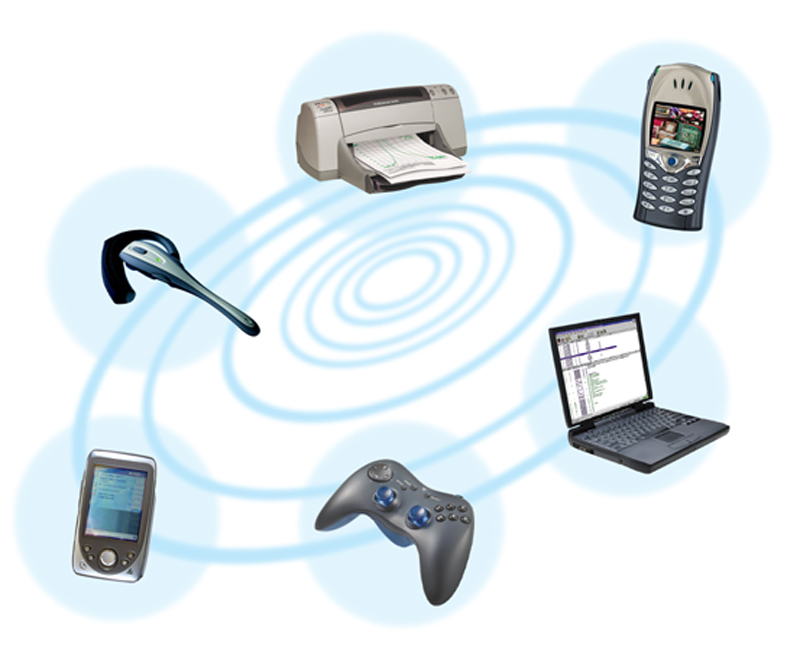Published on the 01/10/2004 | Written by iStart

This article explains technology characteristics and workings of Bluetooth, a short-range wireless connectivity technology that lets devices automatically recognize, connect and transfer data between each other…
What is Bluetooth?
Bluetooth is a wireless specification delivering short-range radio communication between electronic devices that are equipped with specialised Bluetooth chips. It lets nearly all devices talk to one another by creating a common language between them. All devices such as cell phones, PDAs, pagers, stereos, and other home appliances can communicate and connect using Bluetooth technology to form a private, personal area network (PAN).
Technology Characteristics
- The Bluetooth specification standard defines a short range (10-meter) radio link.
- The devices carrying Bluetooth-enabled chips can easily transfer data at a rate of about 720 Kbps (kilobits per second) within 10 meters (33 feet) of range through walls, clothing and luggage bags. The interaction between devices occur by itself without direct human intervention whenever they are within each other’s range. In this process, the software technology embedded in the Bluetooth transceiver chip triggers an automatic connection to deliver and accept the data flow.
- Since Bluetooth is of short range with limited speed and low-power technology it is less attractive to corporate wireless local area networks that are generally powered with the 802.11 wireless LAN technology.
- Each Bluetooth-enabled device contains a 1.5-inch square transceiver chip operating in the ISM (industrial, scientific, and medical) radio frequency band of 2.40 GHz to 2.48 GHz. This frequency is generally available worldwide for free without any licensing restrictions. The ISM band is divided into 79 channels with each carrying a bandwidth of 1 MHz.
- In each transceiver chip a software is embedded called link controller. This mechanism performs the functions of identifying other Bluetooth devices, connecting and transferring of data.
How Bluetooth Operates
Whenever devices carrying Bluetooth technology are within each other’s range, they create an automatic ad hoc PAN (personal area network) called a piconet. In this arrangement, one device acts as the “master” such as laptop or PDA, while other devices function as “slaves” such as printers, scanners, etc. A piconet normally carries up to eight devices. The master device decides if a particular communication service is needed from a slave device.
At the time when a connection is made between Bluetooth devices, an exchange of unique Bluetooth identity called global ID takes place. A device globalID indicates its profile along with capability functions.
Upon matching of the device profile a connection is made and as the devices exchange data, the Bluetooth transceiver chip hops back and forth among frequencies.
A scatternet forms if a device from one piconet also acts as a member of another piconet. In this scheme, a device being master in one piconet can simultaneously be a slave in the other one.
Security Limitations in Bluetooth
Due to the aspect of radio waves, experts fear a security concern with Bluetooth. The issue can be addressed with three aspects: specific sequence of channel hopping known only to the sending and receiving devices, challenge-response authentication routine to verify the validity of the receiving unit, and the 128-bit key encryption standard for securing transmission between devices.
Bluetooth Advantages
One can create a personal area network at home or on the road with Bluetooth-enabled devices such as keyboard, mouse, scanner, PDA, laptop, cell phone, etc. This network can automatically help synchronize notes, calendar, address book and also print pictures, receive emails, access cell phones messages, etc. It can even help consumers pay bills with credit card through Bluetooth cash register if a Bluetooth PDA stores the card information.
Bluetooth Resources
The Official Bluetooth Wireless Information Site



























